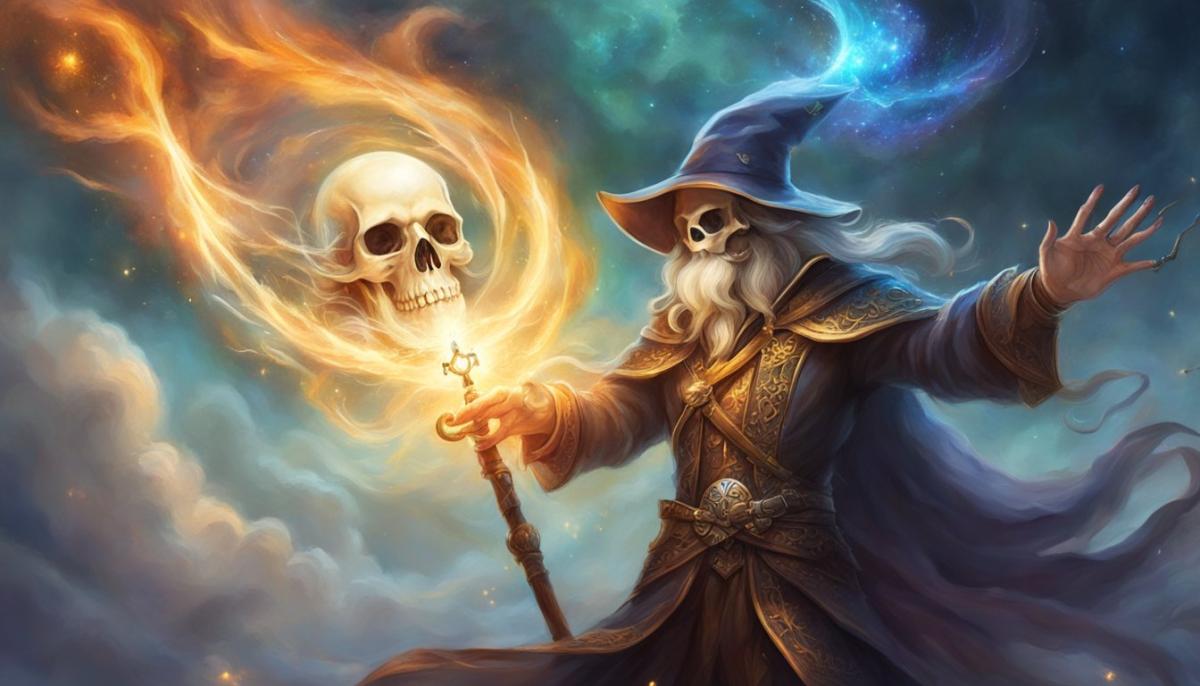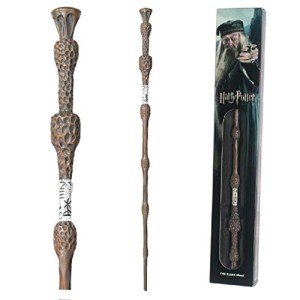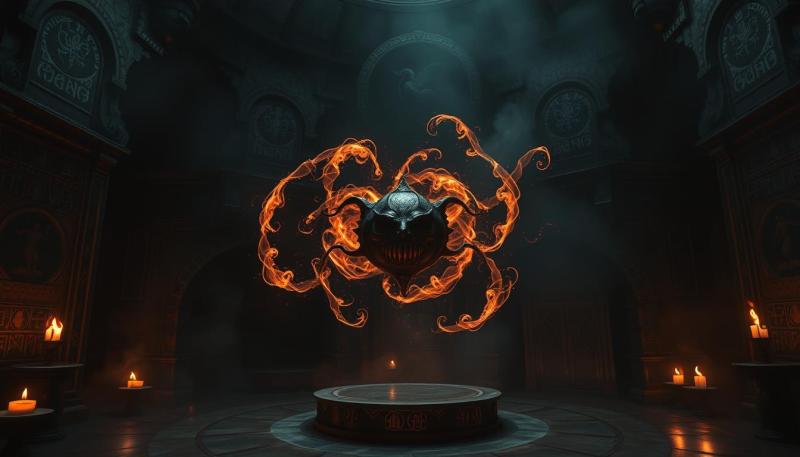In the wizarding world of Harry Potter, few spells strike as much fear as those designed to kill. The most notorious is the Killing Curse, known by its incantation "Avada Kedavra." This Dark Arts spell causes instant, painless death without leaving any physical marks on the victim's body. When cast successfully, the Killing Curse produces a blinding flash of green light and results in immediate death, making it one of the three Unforgivable Curses in the wizarding world.

What makes this curse particularly fascinating is that throughout the entire Harry Potter series, only one person has ever survived it. Harry Potter himself escaped death by this curse multiple times - first as a baby due to his mother's loving sacrifice, and later through various magical connections including being an accidental Horcrux and wand core similarities. The absence of physical damage makes deaths by this curse particularly mysterious to Muggles who might discover the victims.
Key Takeaways
- The Killing Curse causes instantaneous death without physical marks and is accompanied by a distinctive green light.
- Harry Potter is the only known survivor of the curse, protected initially by his mother's sacrifice.
- The curse is classified as Unforgivable in the wizarding world, resulting in severe legal and moral consequences for its use.
Avada Kedavra: The Unforgivable Killing Curse
The Killing Curse stands as the most feared spell in the wizarding world, instantly ending life without leaving physical marks on its victims. When cast, it manifests as a blinding flash of green light and requires powerful dark intentions from the caster.
Defining the Dark Arts
Avada Kedavra is classified as one of the three Unforgivable Curses in the wizarding world. This classification occurred officially in 1717, marking it as illegal with the strictest penalties attached to its use.
What makes this curse particularly sinister is not just its deadly effect, but the intent required to cast it. You need genuine malice and desire to end life - mere anger isn't enough. Unlike other harmful spells, the Killing Curse specifically requires the caster to tap into darkness.
The green light that accompanies Avada Kedavra has become its signature identifier, striking fear into those who witness it. When you see this emerald flash, death almost certainly follows.
Historical Use and Notable Casters
Lord Voldemort stands as the most notorious user of the Killing Curse. His reign of terror was marked by countless green flashes, leaving numerous families broken. His failed attempt on Harry Potter created the only known survivor of the curse.
Death Eaters frequently employed Avada Kedavra during both wizarding wars, though perhaps less often than expected. This relative restraint likely stems from the curse's demanding magical requirements.
Barty Crouch Jr. (disguised as Mad-Eye Moody) demonstrated the curse on a spider during a Defense Against the Dark Arts class, showing students its instantaneous lethality. Throughout history, dark wizards seeking power have turned to this spell for its unblockable killing power.
Mechanics of the Curse
The Killing Curse causes instantaneous and painless death without leaving marks or trauma on the victim's body. When you're hit by Avada Kedavra, life simply ends.
What makes this curse particularly dangerous is its unblockable nature. You cannot stop it with standard magical shields or counter-curses - your only defense is physical evasion or placing objects in its path.
The incantation "Avada Kedavra" must be spoken with precision and conviction. Simply saying the words isn't enough; you must channel genuine intent to kill. This requirement makes the curse difficult to master, as explained by fake Moody when he told students they could all point their wands and say the words without causing him harm.
The magical energy required is substantial. After casting the Killing Curse multiple times, even powerful wizards show signs of fatigue, explaining why even Death Eaters don't use it constantly.
The Moral and Legal Implications
In the wizarding world, lethal spells come with serious consequences. The magical government strictly regulates deadly magic while wizards and witches face difficult ethical questions about when, if ever, such spells are justified.
Dumbledore Wand in Windowed Box - Harry Potter
Bring a piece of magic into your home with this beautifully designed Dumbledore wand, perfect for collectors and fans alike
Product information
$43.39
Product Review Score
4.72 out of 5 stars
222 reviewsProduct links
Ministry of Magic's Stance
The Ministry of Magic classifies the Killing Curse (Avada Kedavra) as one of the three Unforgivable Curses, making its use against another human punishable by a life sentence in Azkaban prison. This harsh penalty reflects the Ministry's zero-tolerance approach to lethal magic.
During Lord Voldemort's rise to power, the Ministry temporarily authorized Aurors to use Unforgivable Curses against Death Eaters. This controversial policy showed how moral boundaries can shift during wartime.
The Ministry's stance is sometimes criticized as inconsistent. While the Killing Curse is banned, other potentially lethal spells like Incendio remain legal despite their ability to cause death.
Ethical Questions and Wizarding Morality
When you examine wizarding morality, the ethics of lethal spells become complicated. Some argue that spells themselves are amoral - it's how they're used that matters. This raises questions about intent versus outcome.
Dumbledore exemplified one moral position, refusing to use the Killing Curse even against enemies like Voldemort. By contrast, Death Eaters like Bellatrix Lestrange used it freely, showing their disregard for wizarding law and human life.
Some scholars point to the ancient origins of "Avada Kedavra", suggesting it was originally a healing spell before becoming corrupted. This history challenges the notion that certain magic is inherently evil.
The Killing Curse leaves no physical mark on victims, creating a strange moral disconnect - death without visible violence. This clean killing makes it easier for some wizards to distance themselves from the moral weight of taking a life.
Countermeasures and Protection
While deadly spells like Avada Kedavra are extremely dangerous, wizards have developed various methods to counter or resist fatal magic. These range from physical defenses to powerful magical protections that can sometimes overcome even the most sinister curses.
Gryffindor Hooded Bathrobe for Harry Potter Fans
Wrap yourself in the cozy spirit of Gryffindor while enjoying magical moments at home
Product information
$79.99
Product Review Score
4.26 out of 5 stars
195 reviewsProduct links
Known Methods of Resistance
The most straightforward way to avoid deadly spells is to physically dodge them. In duels, skilled wizards like Albus Dumbledore have shown remarkable agility by simply stepping aside from killing curses.
You can also block killing spells by conjuring physical objects to intercept them. During the battle at the Department of Mysteries, Dumbledore animated a statue to absorb Voldemort's killing curse, demonstrating this technique effectively.
The Disarming Charm, Expelliarmus, serves as another crucial defense. By removing your opponent's wand, you prevent them from casting deadly spells altogether. Harry Potter famously relied on this spell during his final confrontation with Voldemort.
For specific dark magic, counter-curses exist that can neutralize or reverse harmful effects. These must typically be cast quickly before permanent damage occurs.
The Role of Sacrificial Protection
Sacrificial protection represents one of the most powerful defenses against deadly magic. When someone willingly dies to protect another, they can create a magical shield that repels deadly curses.
Lily Potter's sacrifice for Harry created a protection so powerful that it caused Voldemort's killing curse to rebound. This ancient magic continued to protect Harry throughout his childhood and became a key element in Voldemort's ultimate defeat.
This protection is rooted in love, which Dumbledore described as a force more mysterious and powerful than death. Unlike conventional defensive spells, sacrificial protection cannot be learned or practiced—it occurs spontaneously through acts of selfless love.
The protection works against the specific aggressor who was defied by the sacrifice. It can last for years when properly invoked and reinforced through magical means.
Impact on Duels and Warfare
Defensive capabilities drastically change the dynamics of magical combat. During the Battle of Hogwarts, various protective charms and shields proved essential in resisting Death Eater attacks.
You can use Shield Charms to block minor to moderate curses, though they typically fail against Unforgivable Curses. Advanced defensive magic requires considerable skill—Molly Weasley demonstrated this when she defeated Bellatrix Lestrange by countering dark magic with precisely timed defensive and offensive spells.
For specific threats like Dementors, specialized defensive spells like Expecto Patronum are required. This charm conjures a guardian made of positive energy that repels these dark creatures.
In magical warfare, defensive capabilities often determine survival more than offensive power. The most successful duelists balance both aspects, knowing when to shield and when to strike.
Cultural Impact in the Wizarding World
The killing curse, known as Avada Kedavra, has shaped wizarding culture through literature, myths, and even influenced how the non-magical community perceives deadly magic.

Representations in Literature and Myth
In wizarding literature, Avada Kedavra appears in advanced Defense Against the Dark Arts texts, though detailed instructions are strictly prohibited. You'll find it mentioned in "The Rise and Fall of the Dark Arts" where Voldemort's use of the curse against Harry Potter is documented as the only known survival case.
Ancient wizarding myths suggest the curse originated in Assyrian magical practices, later adapted by medieval European dark wizards. Many magical historians believe the curse draws power from the caster's intent to end life, making it unique among spells.
At Hogwarts, students learn about the curse only in theoretical terms. Professor Moody (actually Barty Crouch Jr.) famously demonstrated it on spiders, shocking students including Ron Weasley who appeared visibly disturbed.
Influence on Muggle Perceptions
Muggles have unknowingly incorporated elements of the killing curse into their folklore. The phrase "Abracadabra," commonly used in Muggle magic shows, is believed to be a corruption of Avada Kedavra.
When breaches in the Statute of Secrecy occurred during Voldemort's reign, Muggle news reported unexplained deaths that were actually killing curse victims. The Ministry of Magic worked tirelessly to modify these reports.
Hermione Granger once noted that Muggle fantasy literature often portrays death spells as producing elaborate visual effects, whereas the actual killing curse simply causes instant death with a flash of green light.
Dolores Umbridge's Ministry-approved curriculum deliberately omitted practical defense against such curses, leaving Dumbledore's Army to learn about them through Harry's firsthand experience.








